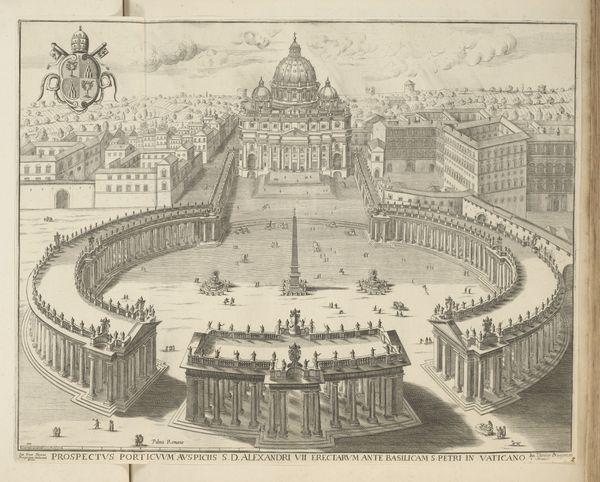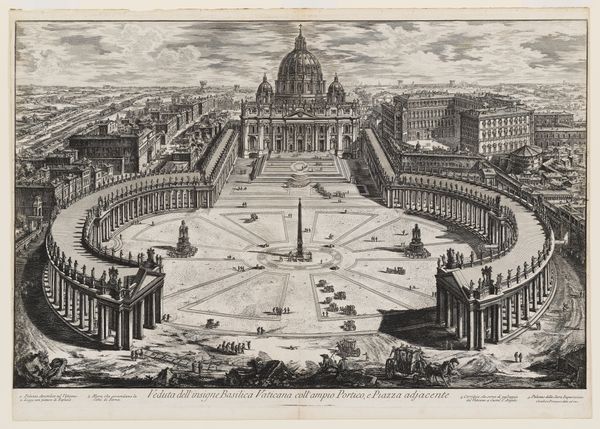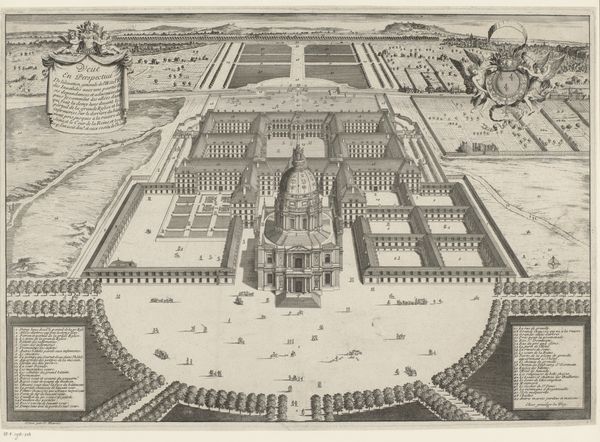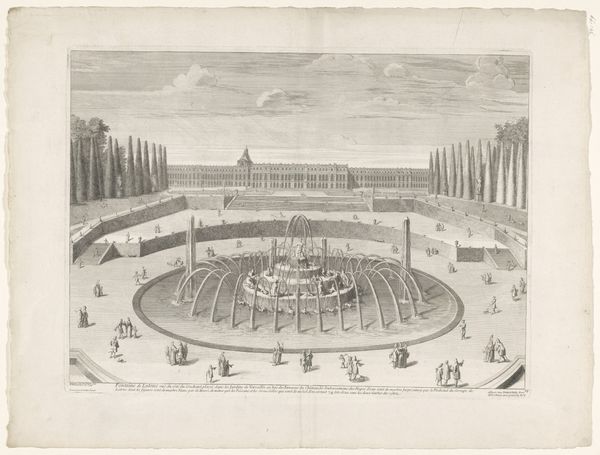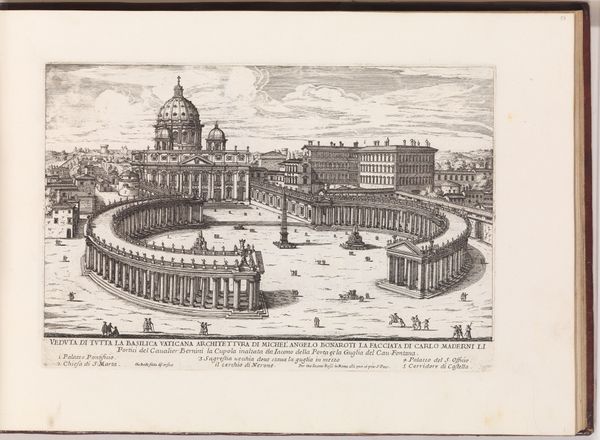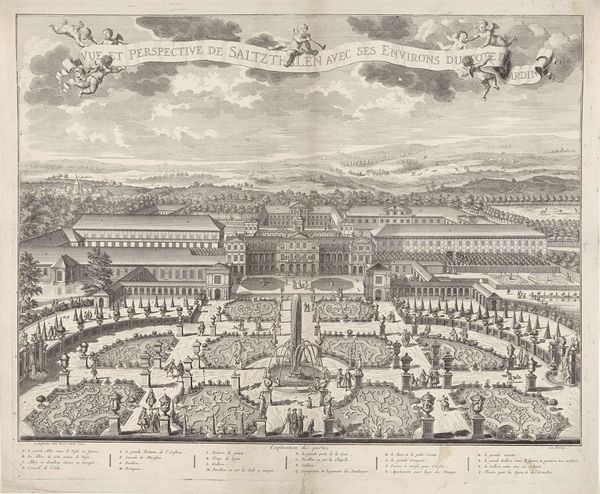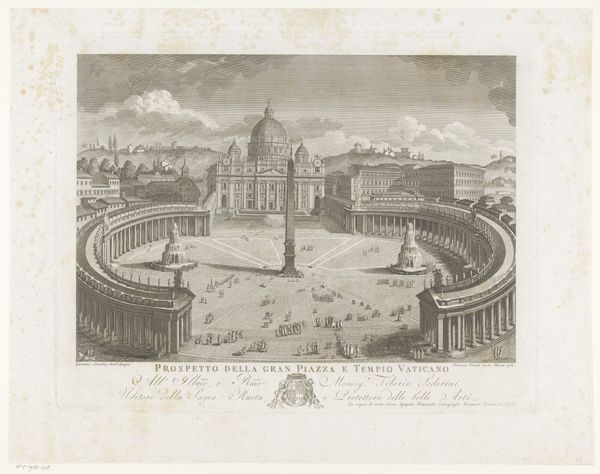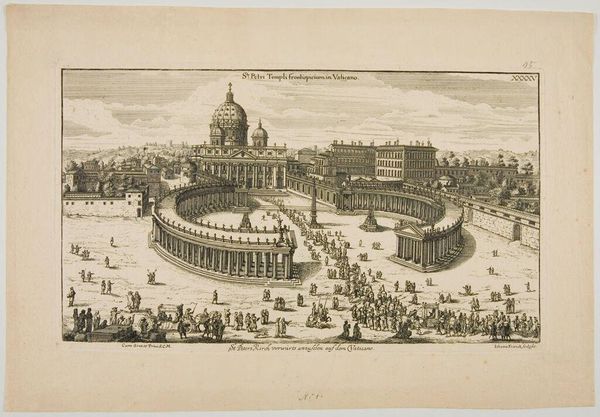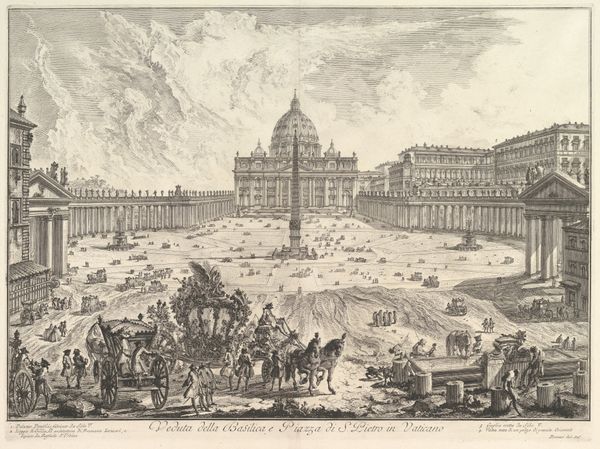
Dimensions: height 430 mm, width 571 mm
Copyright: Rijks Museum: Open Domain
Domenico Montaigù made this print of the Sint-Pietersplein en de Sint-Pietersbasiliek using etching, a printmaking technique that relies on acid to bite into a metal plate. This is a reverse process in which the artist draws an image on a plate covered with a wax or varnish, then immerses the plate in acid. The acid eats away the exposed lines, leaving an image that can be inked and printed. The appeal of etching lies in its comparative ease. Unlike engraving, which requires considerable strength to cut lines directly into the metal, etching allows for a more fluid and expressive line. Here, we can see this quality in the fine details of the architecture, and the looser rendering of the clouds and figures. Prints like this one were essentially an early form of mass media, allowing for the wide dissemination of images. By understanding the labor and processes involved in its production, we can begin to appreciate its historical and social significance.
Comments
No comments
Be the first to comment and join the conversation on the ultimate creative platform.

